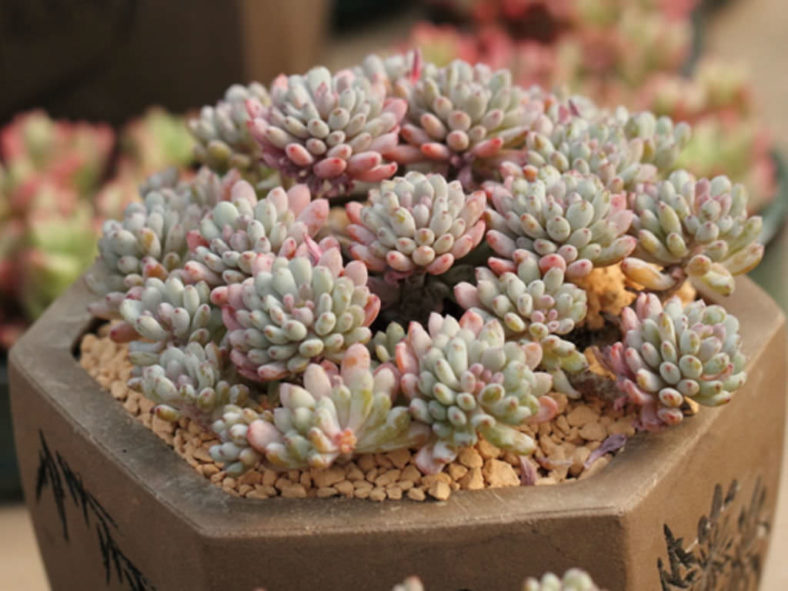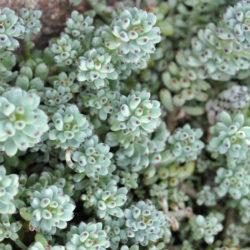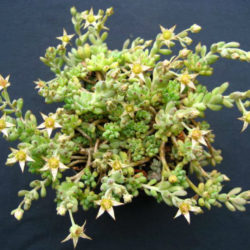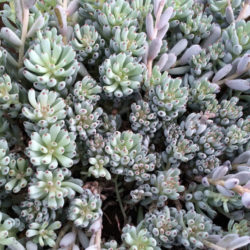Scientific Name
Graptopetalum pachyphyllum Rose
Common Name(s)
Bluebean
Synonym(s)
Echeveria minutifoliata, Sedum atypicum
Scientific Classification
Family: Crassulaceae
Subfamily: Sedoideae
Tribe: Sedeae
Subtribe: Sedinae
Genus: Graptopetalum
Description
Graptopetalum pachyphyllum is a charming, low-growing, often mat-forming succulent with erect or decumbent stems and glaucous, often red-tipped leaves densely packed in small rosettes at the end of each stem. The stems are bluish-green, becoming brown with age, and grow up to 8 inches (20 cm) long. The rosettes are up to 1.8 inches (4.5 cm) in diameter.
The flowers are greenish-white, banded in dark red, and appear on tall, slender stalks in summer.
Origin
Graptopetalum pachyphyllum is native to the mountains of central Mexico (from Zacatecas and San Luis Potosí to Jalisco, Hidalgo, and Queretaro). It grows on shady rocks and cliffs at elevations from 6,230 and (1,900 to 2,300 m).

Hardiness
USDA hardiness zone 9b to 11b: from 25 °F (−3.9 °C) to 50 °F (+10 °C).
How to Grow and Care
The rules for Graptopetalums care are similar to those for most succulents. All require lots of sunlight to look their best. They require gritty porous soil with excellent drainage. Water regularly over the summer months letting the soil dry out between waterings. Minimal water is required over winter. Overwatering is a cause of root rots, and the plant can get several pest infestations. Fertilize once during the growing season with a balanced fertilizer diluted to ¼ strength.
The Graptopetalums are generally easily propagated by seeds, leaf cuttings, or offsets. Any rosette that breaks off has the potential to root and start a new plant. Even a leaf that drops off will quickly root below the parent plant and produce a new rosette. The new plant feeds off the leaf until it shrivels and falls off. The new little ghost plant had rooted and sprouted new leaves by then.
See more at How to Grow and Care for Graptopetalum.
Links
- Back to genus Graptopetalum
- Succupedia: Browse succulents by Scientific Name, Common Name, Genus, Family, USDA Hardiness Zone, Origin, or cacti by Genus
Photo Gallery
Click on a photo to see a larger version.


